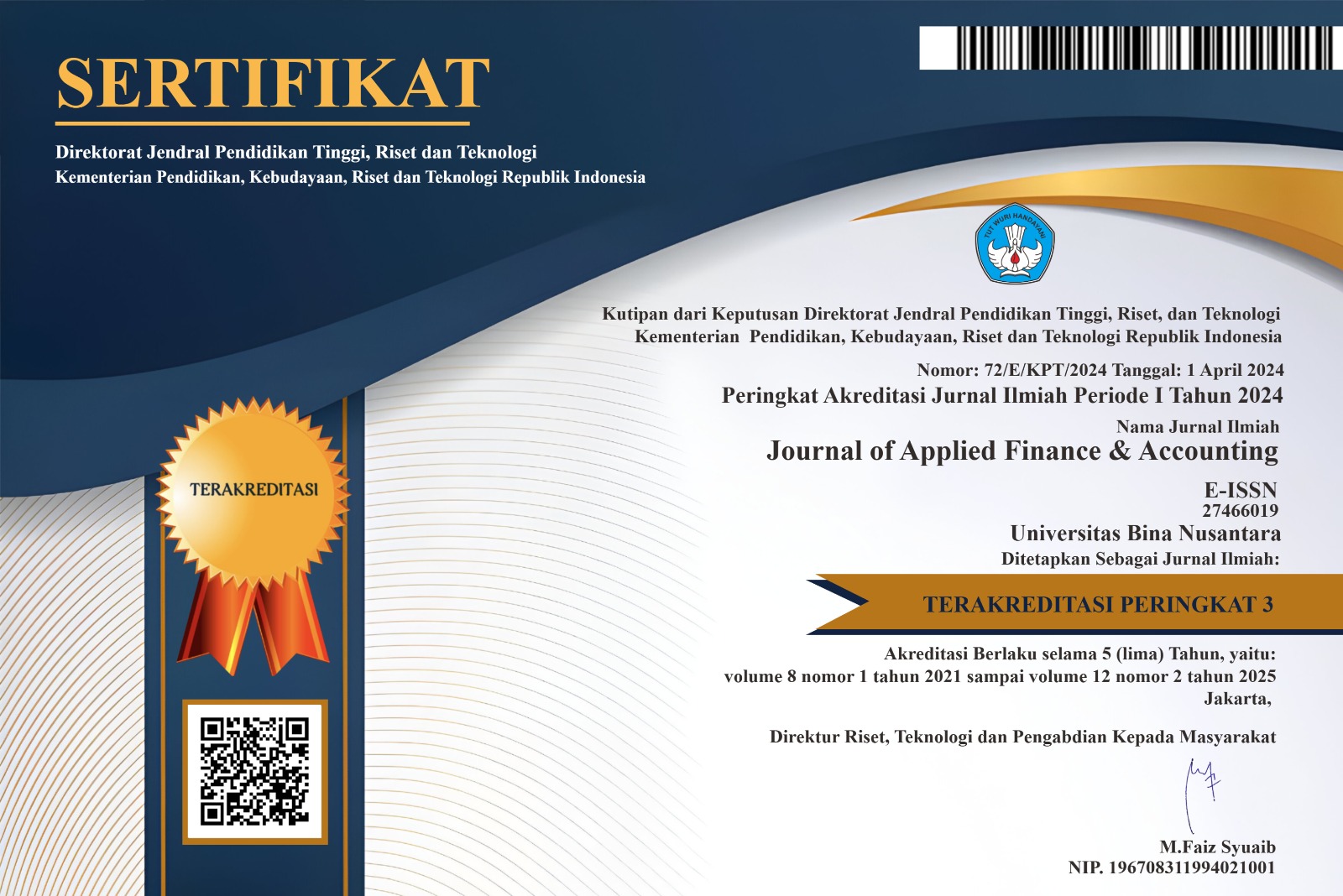PENGGUNAAN BALANCED SCORECARD DALAM STRATEGIC MANAGEMENT JAMU PUSPO
DOI:
https://doi.org/10.21512/jafa.v4i1.279Keywords:
balanced scorecard, strategic management, Jamu Puspo.Abstract
The ’balanced scorecard’ is used not only as a tool to clarify the strategy of a company, but more importantly used for planning and development strategies. Without a strategy, it is impossible to survive in a competitive and dynamic business world. Combining long-term competitive capabilities with the goal of creating a synthesized company, the balanced scorecard can be trusted to utilize the financial measures of past performance to predict future performance. This data was analyzed from four perspectives: financial, customer, internal business processes, and learning and growth. The balanced scorecard is used as a basic measure, not only of the company's long-term goals, but also from the inclusion of the vision and mission. Herbal Puspo, a company engaged in the field of herbal pharmaceuticals, is also in the process of determining the direction and objectives of the company. The authors help determine its vision and mission which is then translated into strategic objectives for the company. The authors collected data and information, including surveys and industry analysis, which is then analyzed using a variety of basic theories of management strategies such as Porter's Five Forces and the TOWS matrix. From this analysis, the authors, together with the company management, summarized a strategic measure which was then translated into the four perspectives of the balanced scorecard companies.
Downloads
Published
Issue
Section
License
Authors who publish with this journal agree to the following terms:
Authors retain copyright and grant the journal right of first publication with the work simultaneously licensed under a Creative Commons Attribution License that allows others to share the work with an acknowledgement of the work's authorship and initial publication in this journal.
Authors are able to enter into separate, additional contractual arrangements for the non-exclusive distribution of the journal's published version of the work (e.g., post it to an institutional repository or publish it in a book), with an acknowledgement of its initial publication in this journal.
Authors are permitted and encouraged to post their work online (e.g., in institutional repositories or on their website) prior to and during the submission process, as it can lead to productive exchanges, as well as earlier and greater citation of published work (See The Effect of Open Access).




